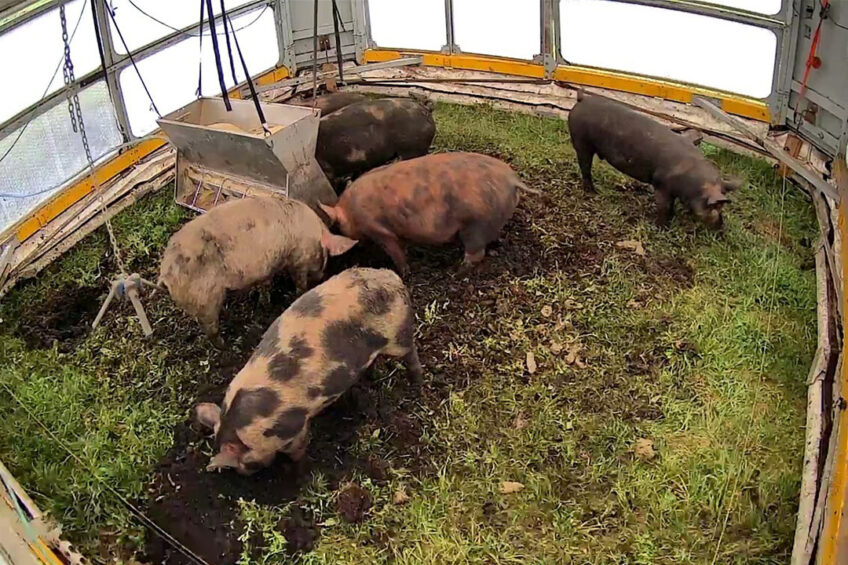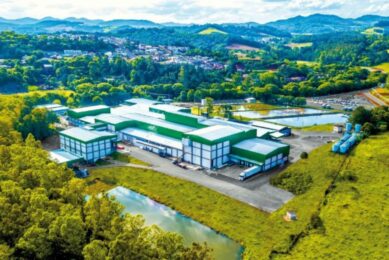Pigs on the move: Self-driving pig houses

Does keeping pigs in mobile, self-driving animal houses sound futuristic? Not according to a recent Canadian initiative.
Canadian farmer and technologist Daniel Badiou of Ukko Robotics designed an outdoor mobile unit for pig production. He and partner Katrina Jean-Laflamme had already developed a “robotic barn” to house and protect pastured-raised chickens and thought it should work for pigs too.
The company’s Rova Barn is a mobile, self-driving animal house. It shelters the animals from elements, provides them with water and supplemental feed, and gradually moves across a field, exposing new grass to the animals daily. Ventilation can be controlled to ensure animals are as comfortable as possible in the prevailing weather conditions.
After over 2 years of testing on their home farm in Manitoba, the team concluded that it allows small farms to raise pigs on grass. Pigs were observed not to fight as much and tail biting had disappeared, according to Badiou in a press release.
Mobile pig barn in various sizes
The mobile barn comes in various sizes. The largest will house around 50 pigs, depending on desired stocking density. The units need a minimum of 7 acres (2.8 ha) of pasture land to operate on. Depending on the size of the unit, each can hold 5-7 days of feed and water. Feed and water deliveries can be handled with an all-terrain vehicle pulling a small trailer.
The barns can be programmed to move at different speeds depending on stocking density, terrain, and pasture/grass condition. Every day, units typically move between 6 and 30 feet (1.8m-9.1m). When a unit reaches the end of a field, the manager uses a remote control to put the unit into manual mode and turn it around. Operation is fully automated. Units recognise when they have reached the end of a field and will automatically turn and head down a fresh section of the field.

The barns have solar charging with enough battery capacity to work for up to 5 days without sun. The units are designed to work even in the harsh northern winters experienced in places like Manitoba.
Welfare and sustainability issues
By moving the animals evenly over sections of pasture, the system is said to reduce overgrazing and over-fertilisation. That, according to the press release, contributes to soil health and allows farmers to adopt regenerative farming practices with reduced labour. It also allows farmers to experiment with different grasses and cover crops to determine the best nutrition for the pigs.
Each unit has sensors to monitor animal eating and drinking activity.
In the press release, Badiou called the design “a great promotional tool for the farms on the fringes of larger urban areas which are serving a client base interested in animal welfare and sustainable farming.”











